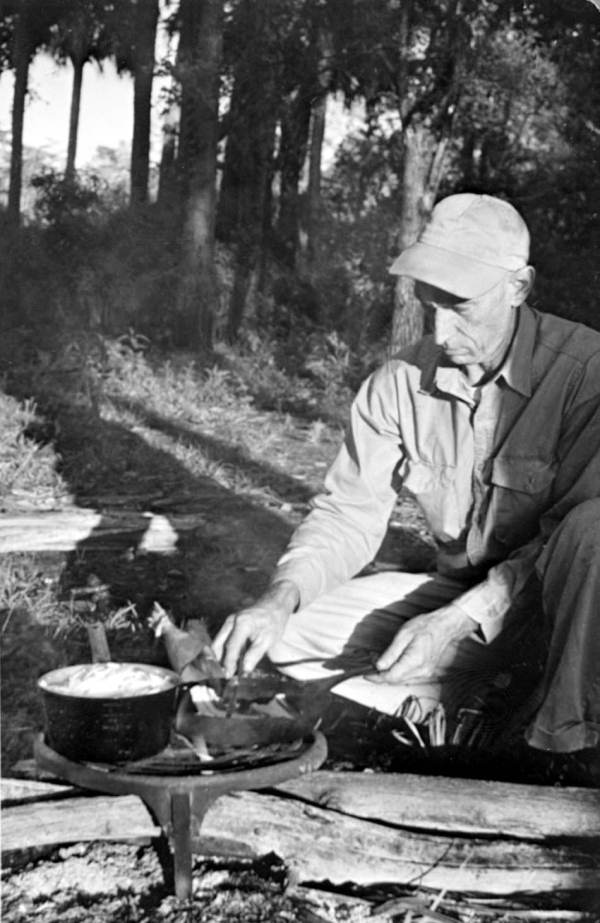Description of previous item
Description of next item
Mmmmm... Swamp Cabbage!
Published August 8, 2014 by Florida Memory
You may be aware that the noble sabal palmetto is Florida’s state tree, but did you know you can eat it? And we’re not just talking about a survival tactic. From Wakulla and Apalachicola in the north to LaBelle and Immokalee in the south, Floridians all over the state have made a tradition out of preparing the hearts of these trees as a tasty dish called swamp cabbage.
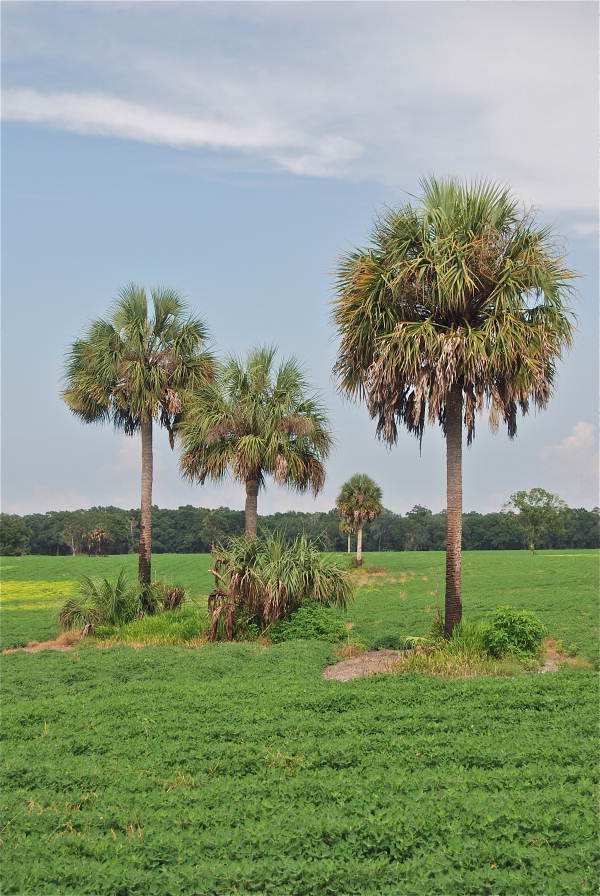
Sabal (or cabbage) palms located in Levy County, Florida. Note that swamp cabbage is typically harvested from the trees when they are much younger, before they develop their rough gray trunks (photo 2010).
The tradition of eating hearts of Florida palm trees likely predates the arrival of Europeans in North America. Captain Hugh Young, Andrew Jackson’s topographical engineer, sketched out a few remarks on the subject in his notes regarding the territory between the Aucilla and Suwannee rivers in 1818. He wrote:
“In the cypress swamps between Assilla and Sahwanne there is abundance of cabbage palmetto. […] It rises with a single stem to the height of forty feet and supports at the top a large mass resembling an immense pineapple, from which project a number of three-sided stems three or four feet long with leaves like the low palmetto but much larger and without prickles. The vegetable substance from which the stems and leaves are supported has in its center a white brittle mucilaginous mass composed of the centre folds of the leaves forming it, which may be eaten raw and when boiled has a taste somewhat like parsnips. In times of scarcity the Indians live on it, and it is said to be wholesome and nutritious.”
We at Florida Memory are still somewhat concerned about Captain Young’s use of the word mucilaginous to describe something edible, but overall his description is fairly accurate, and those of us who have had swamp cabbage agree it is tasty.
As incoming settlers learned about swamp cabbage and began experimenting with it, it became a favorite side dish, especially in sparsely populated areas where the sabal (or cabbage) palmetto was more prevalent. In modern times, swamp cabbage can still be found on the menus of restaurants serving traditional Southern cooking. It is typically prepared by slicing up the heart of a section of palmetto trunk, called a “boot,” and then stewing it with spices and salt pork or some other seasoning meat. The finished product is grayish-green in color, and pairs well with fried fish, pork, or other traditional Florida entrees. Swamp cabbage can also be enjoyed raw, and often appears in salads by the more refined name of “heart of palm.”
Many Florida communities consider swamp cabbage something worth celebrating. Each year at the Florida Forest Festival in Perry, locals celebrate their forestry heritage with a parade, fireworks, live music, and the world’s largest free fish fry. Often, the menu has included swamp cabbage. Down south in Hendry County, residents of LaBelle hold a festival each year devoted to nothing but swamp cabbage, even choosing a Swamp Cabbage Queen to reign over the festivities. In Cedar Key, heart of palm salad served with fresh fruit and a scoop of pistachio ice cream is a favorite traditional restaurant menu item.

Miss Sherri Lynn Woosley, 1971 Swamp Cabbage Queen for the LaBelle Swamp Cabbage Festival. Photo from the festival’s program for that year, which is part of the Florida Collection at the State Library.
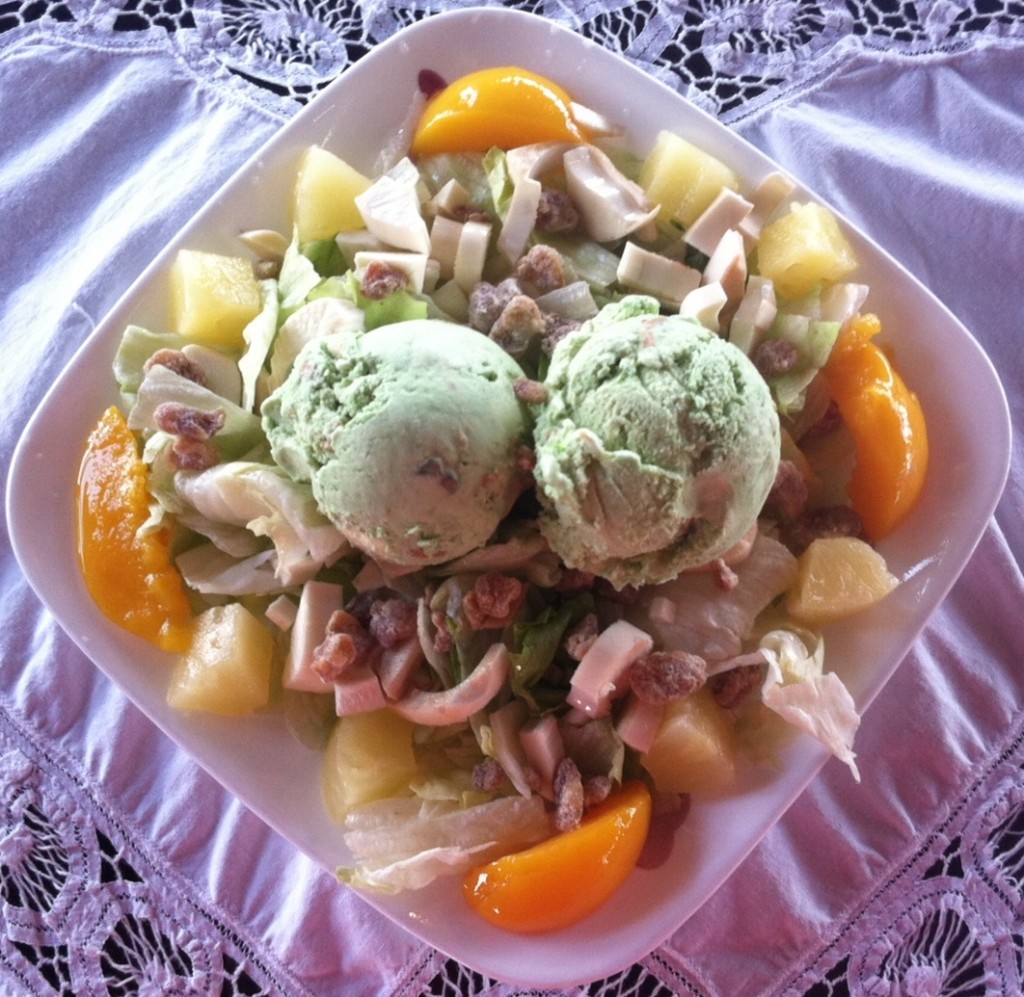
A heart of palm salad as prepared by the Seabreeze Restaurant in Cedar Key. The tartness of the heart of palm is complemented by the sweetness of fresh fruit and the pistachio ice cream in the middle. Photo courtesy of Jamie Griffin (2014).
Tasty as swamp cabbage may be, the cooking and eating of it is the easy part. Cutting through layers of tough palmetto fibers to get to the edible “boot” without damaging the tender flesh inside is much more difficult. The following images from the Florida Photographic Collection illustrate the method used to harvest swamp cabbage.
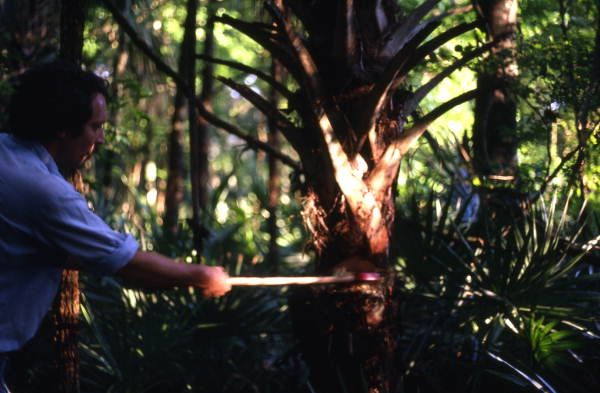
Here, we see Ralph O’Brien of Tampa chopping away the “straps,” which are actually the bases of the fronds or leaves of the tree. This must be done at an angle so that the axe does not become lodged in the inner “boot,” which can spoil the tender flesh inside (photo 1982).
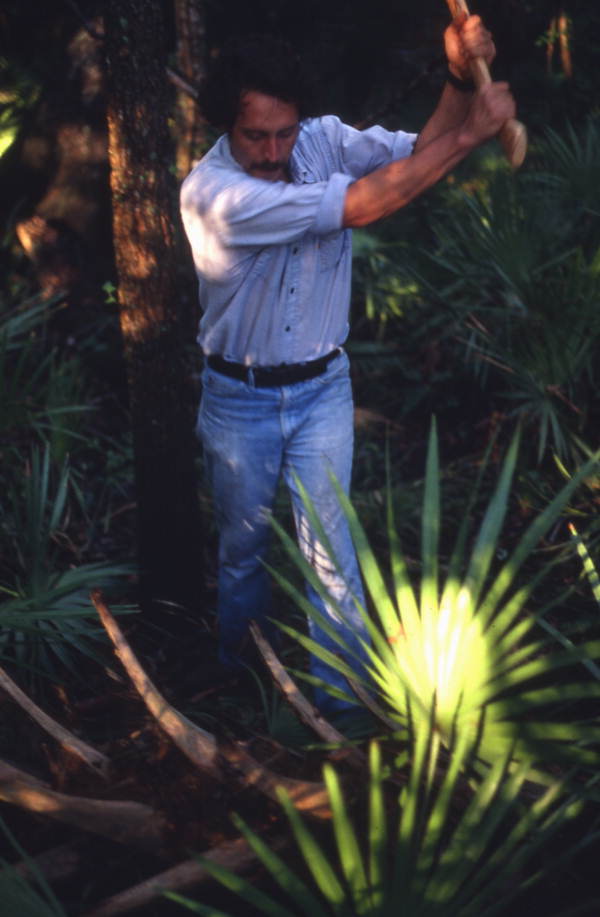
Once the straps have been cleared away from the “boot,” the weight of the remaining attached fronds will cause it to break away from the tree. Here we see Ralph O’Brien chopping off the remaining fronds to make the boot easier to carry (photo 1982).
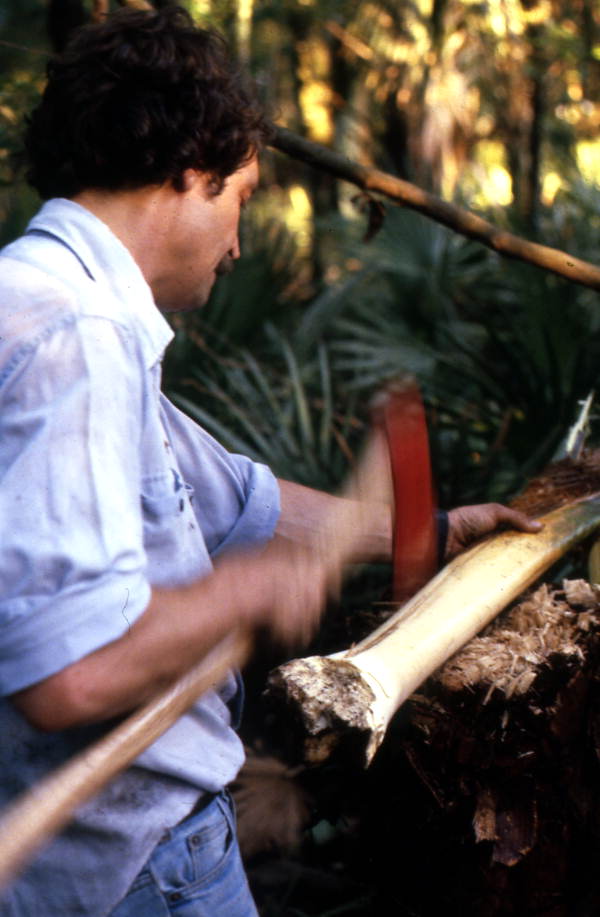
The outer layers of the “boot” are tough, bitter, and inedible. Here, we see Ralph O’Brien carefully splitting successive concentric layers of the boot to get down to the edible flesh at the center (photo 1982).

Once enough layers have been removed from the “boot,” the remaining outer layers may be removed with a sharp knife. Here we see a Lafayette County woman working her way down to the edible flesh of the boot, which she then will slice into a bowl of cool water. The water temporarily prevents the swamp cabbage from turning brown (photo 1983).
Are you ready to try this Florida delicacy? Whether it’s eaten raw on a salad or boiled down with a generous helping of seasoning meat and black pepper, Florida’s state tree is both beautiful and a tasty treat with a long and storied past.
What are your favorite traditional Florida dishes?
Cite This Article
Chicago Manual of Style
(17th Edition)Florida Memory. "Mmmmm... Swamp Cabbage!." Floridiana, 2014. https://www.floridamemory.com/items/show/295198.
MLA
(9th Edition)Florida Memory. "Mmmmm... Swamp Cabbage!." Floridiana, 2014, https://www.floridamemory.com/items/show/295198. Accessed December 30, 2025.
APA
(7th Edition)Florida Memory. (2014, August 8). Mmmmm... Swamp Cabbage!. Floridiana. Retrieved from https://www.floridamemory.com/items/show/295198

 Listen: The Blues Program
Listen: The Blues Program